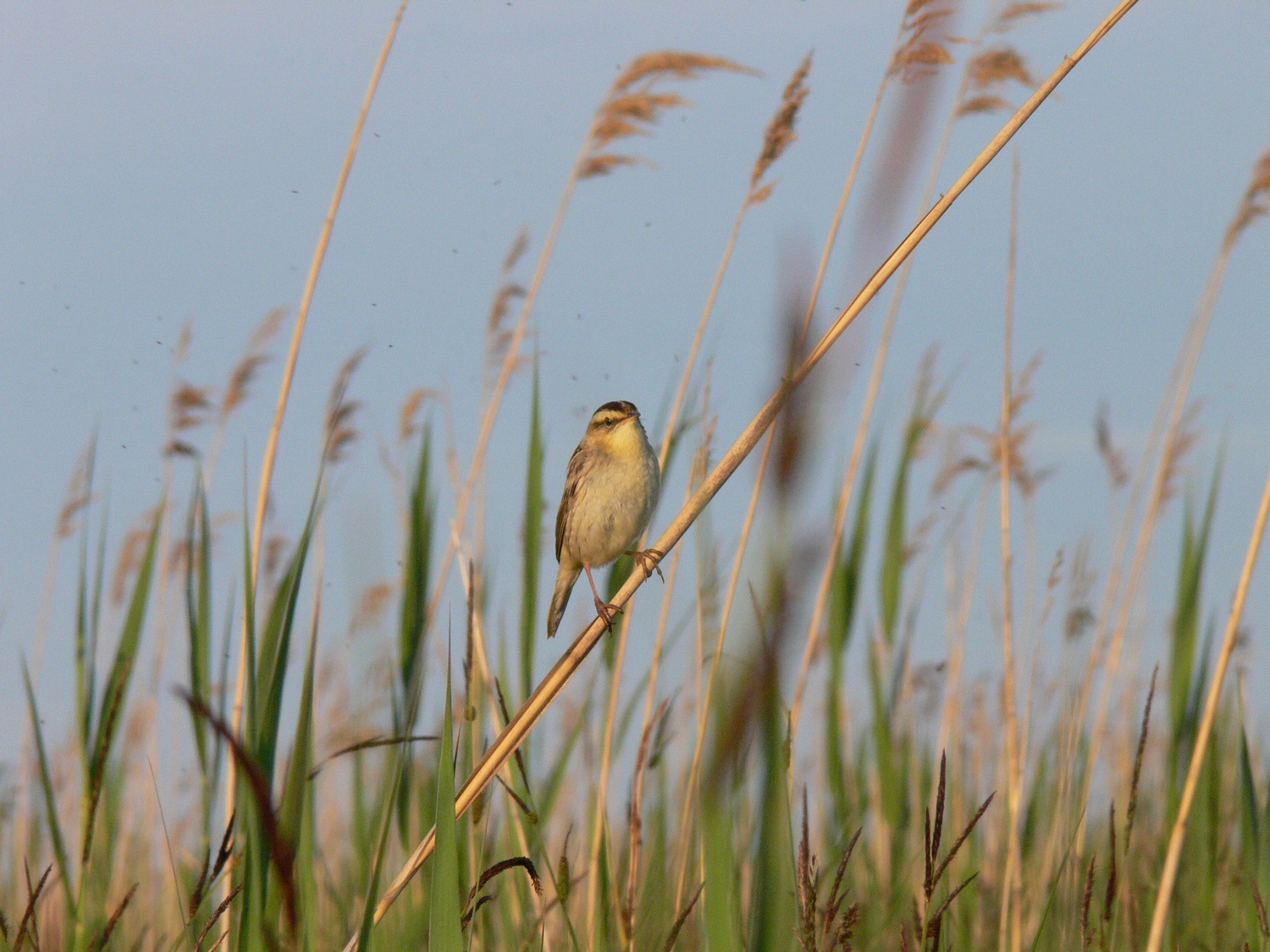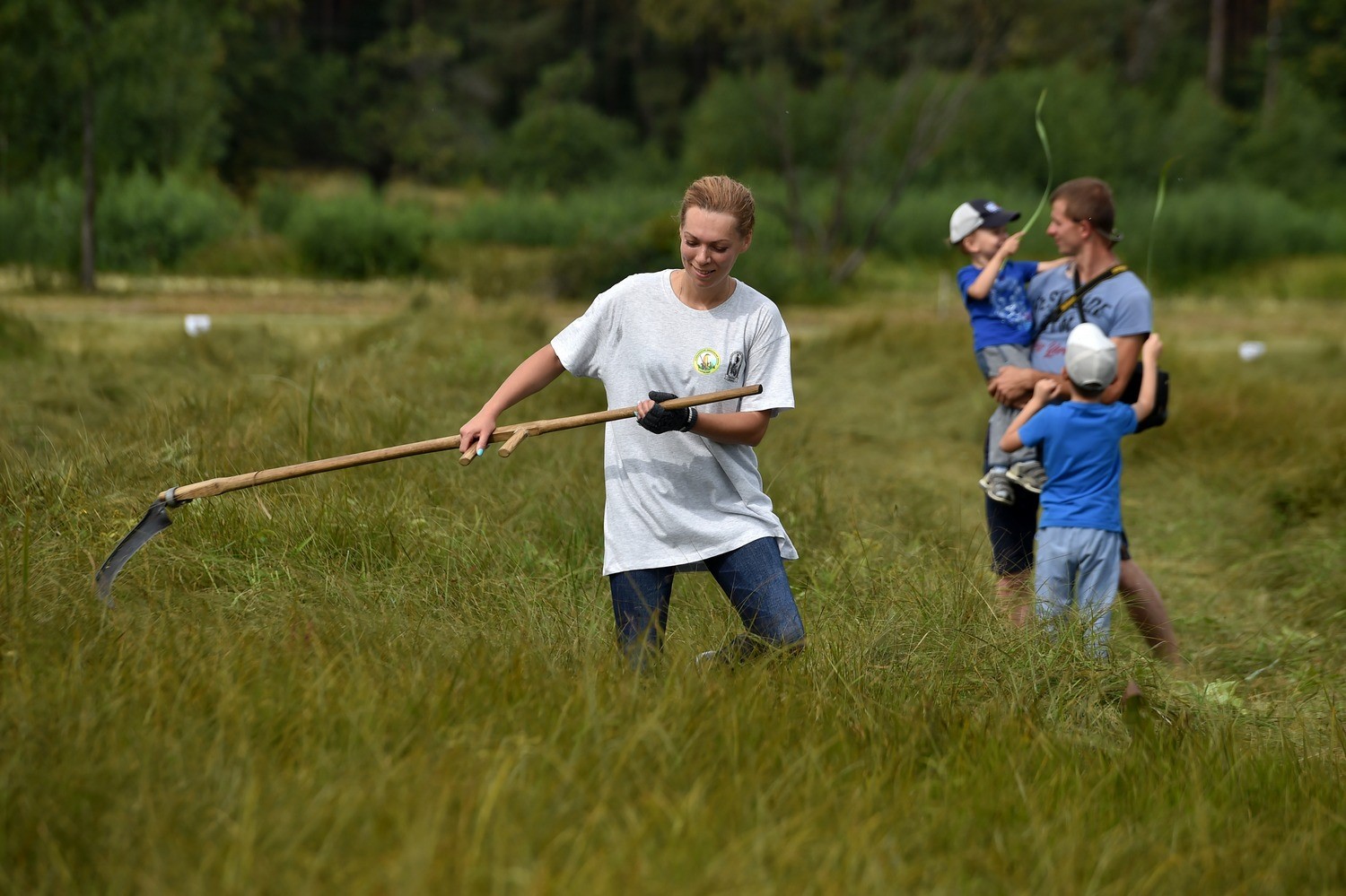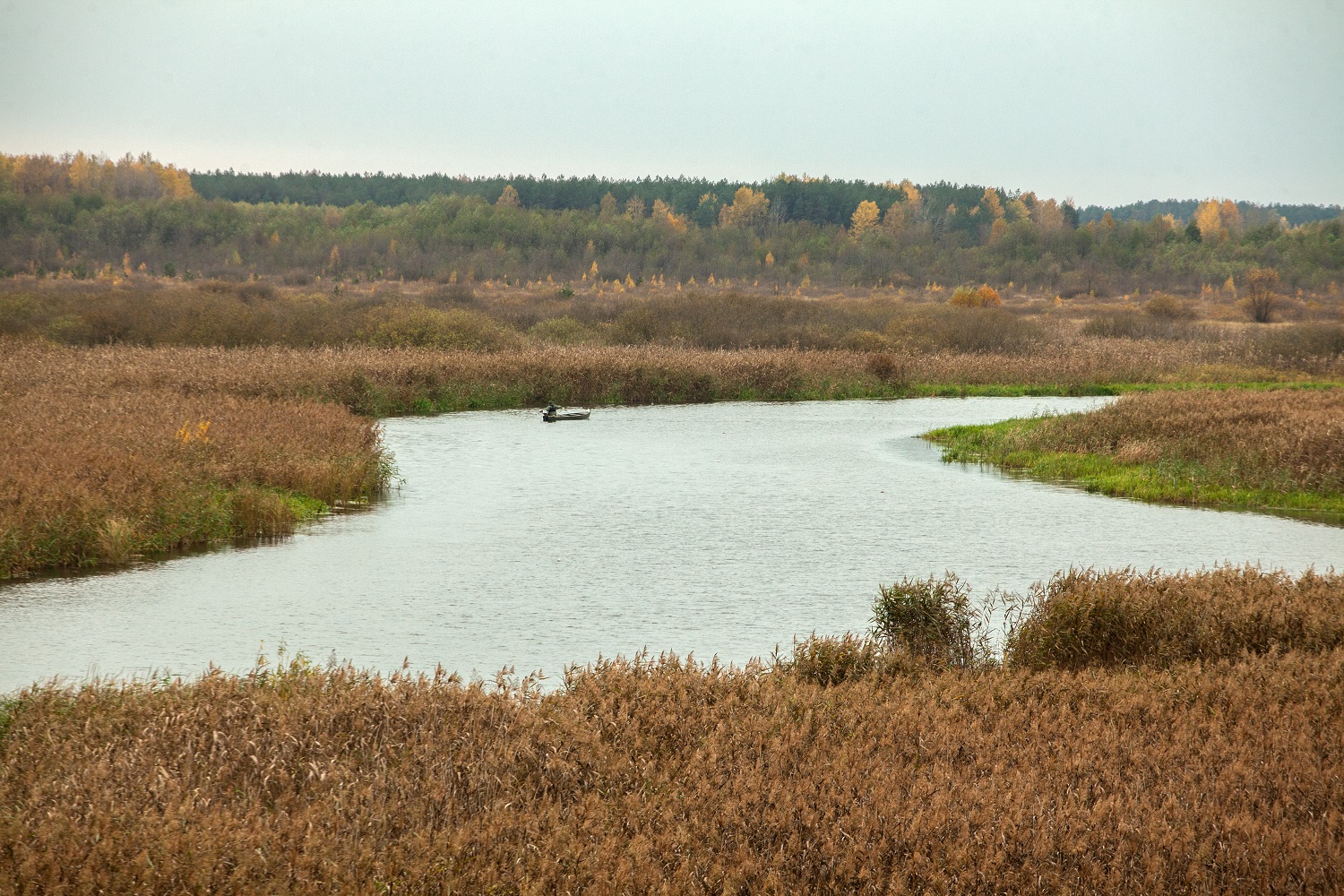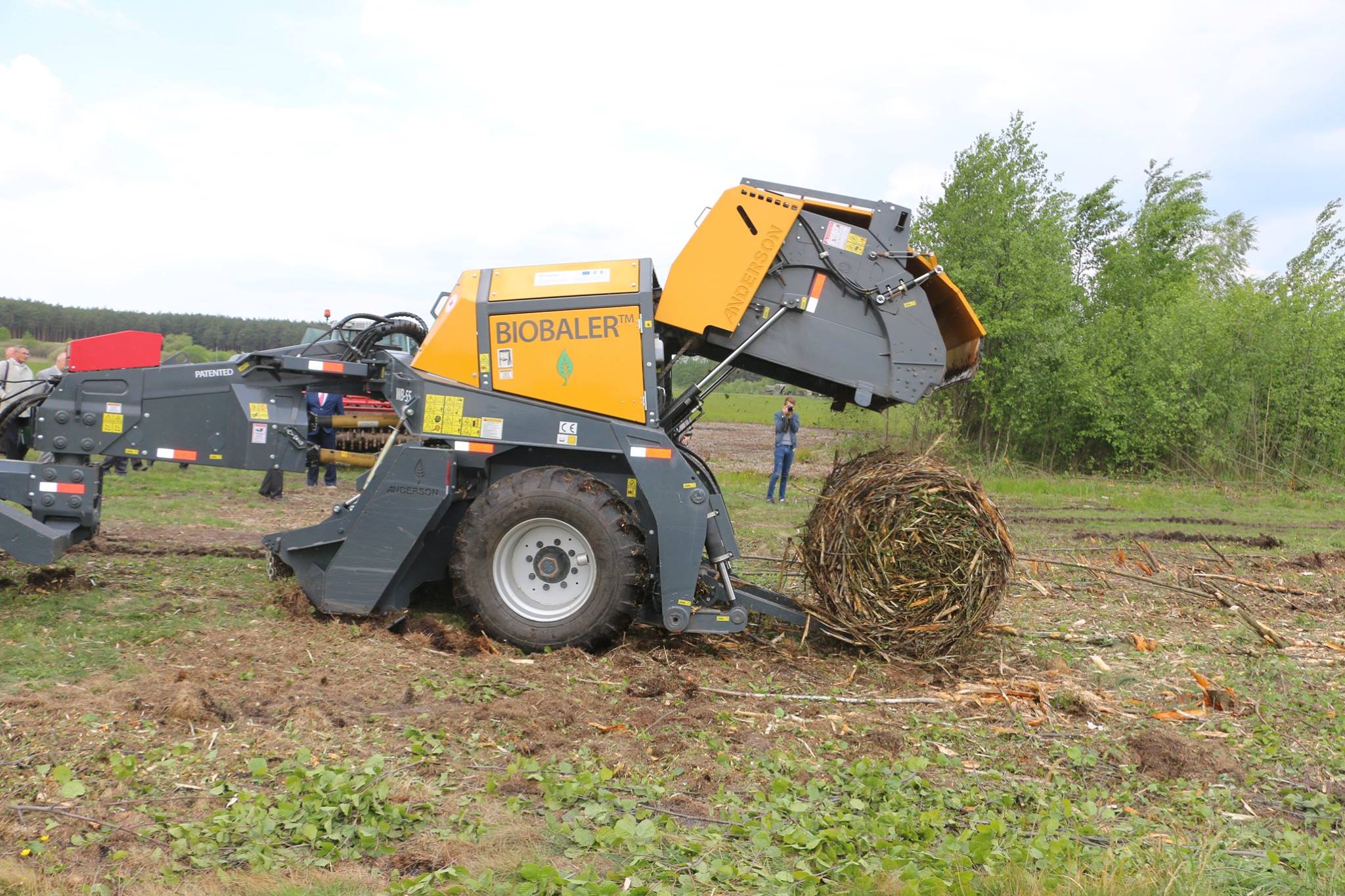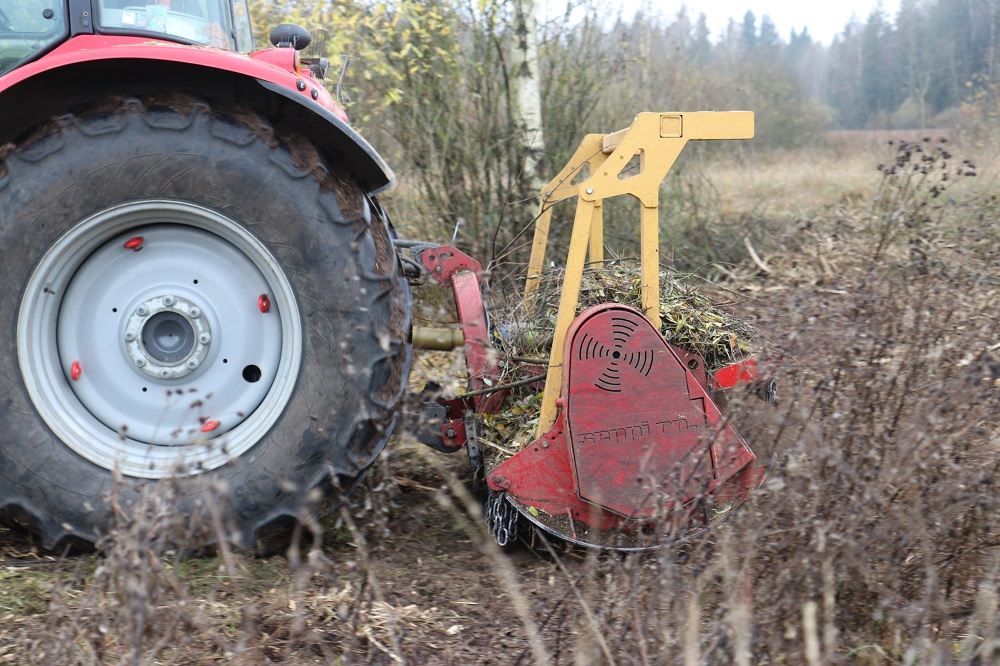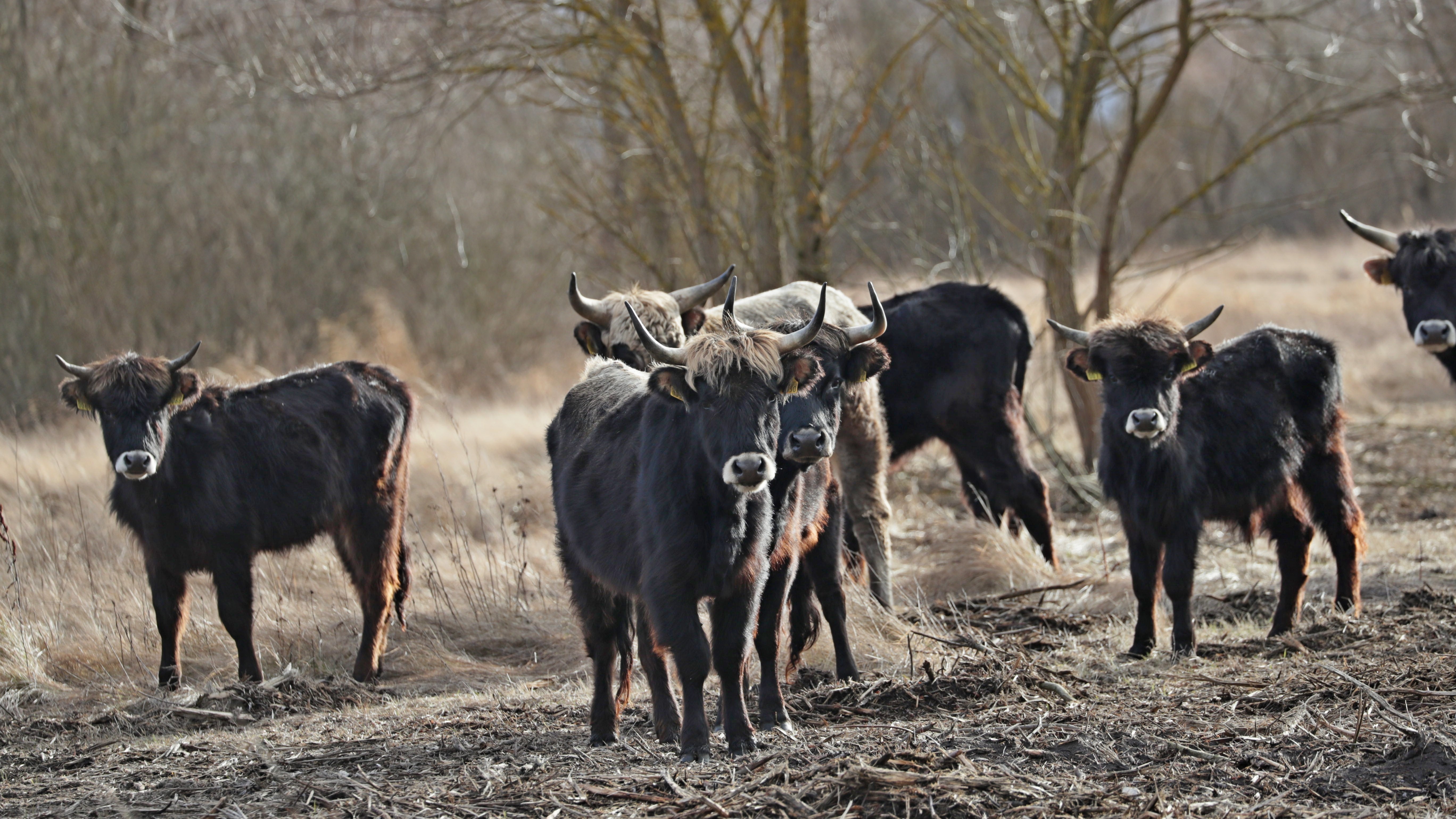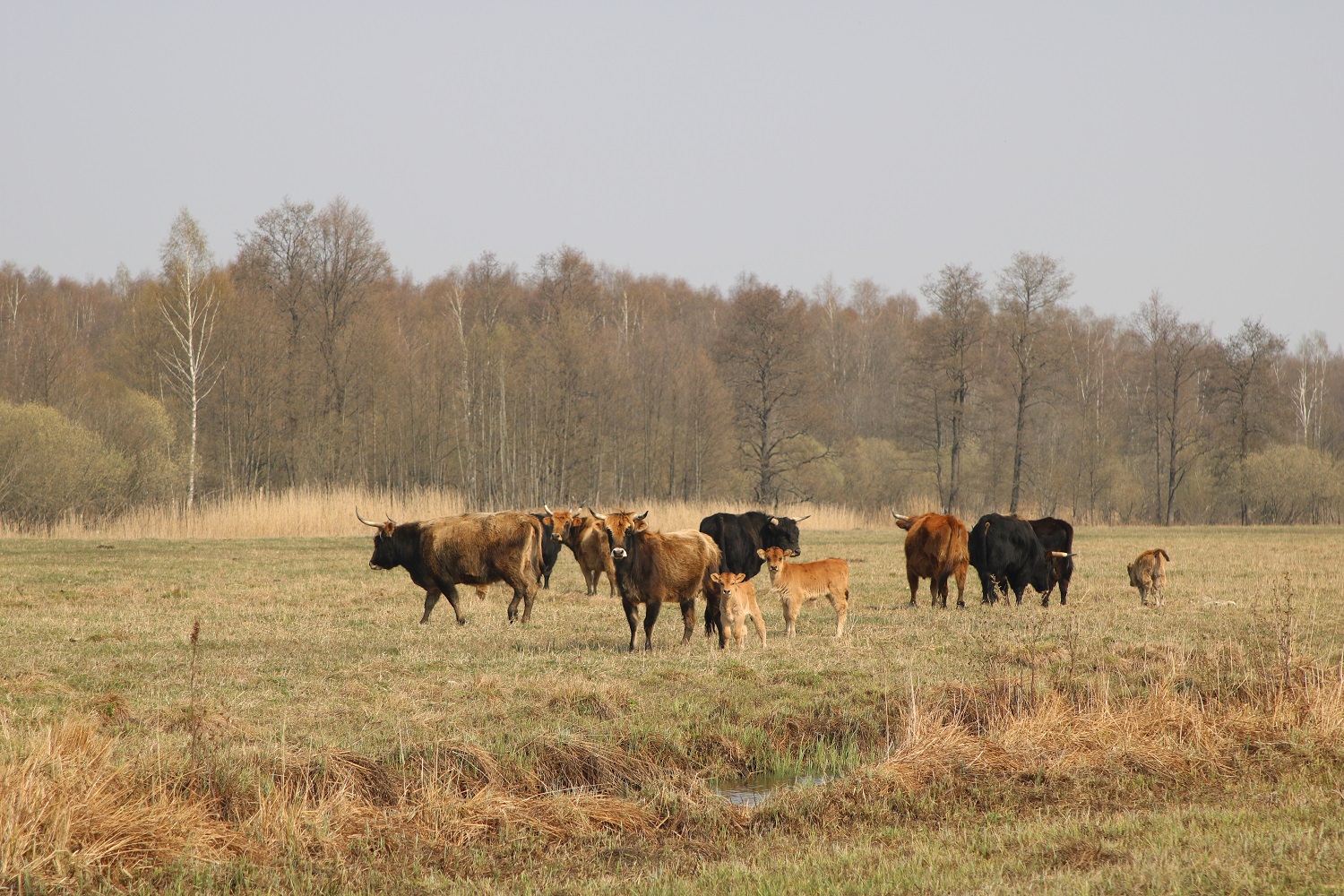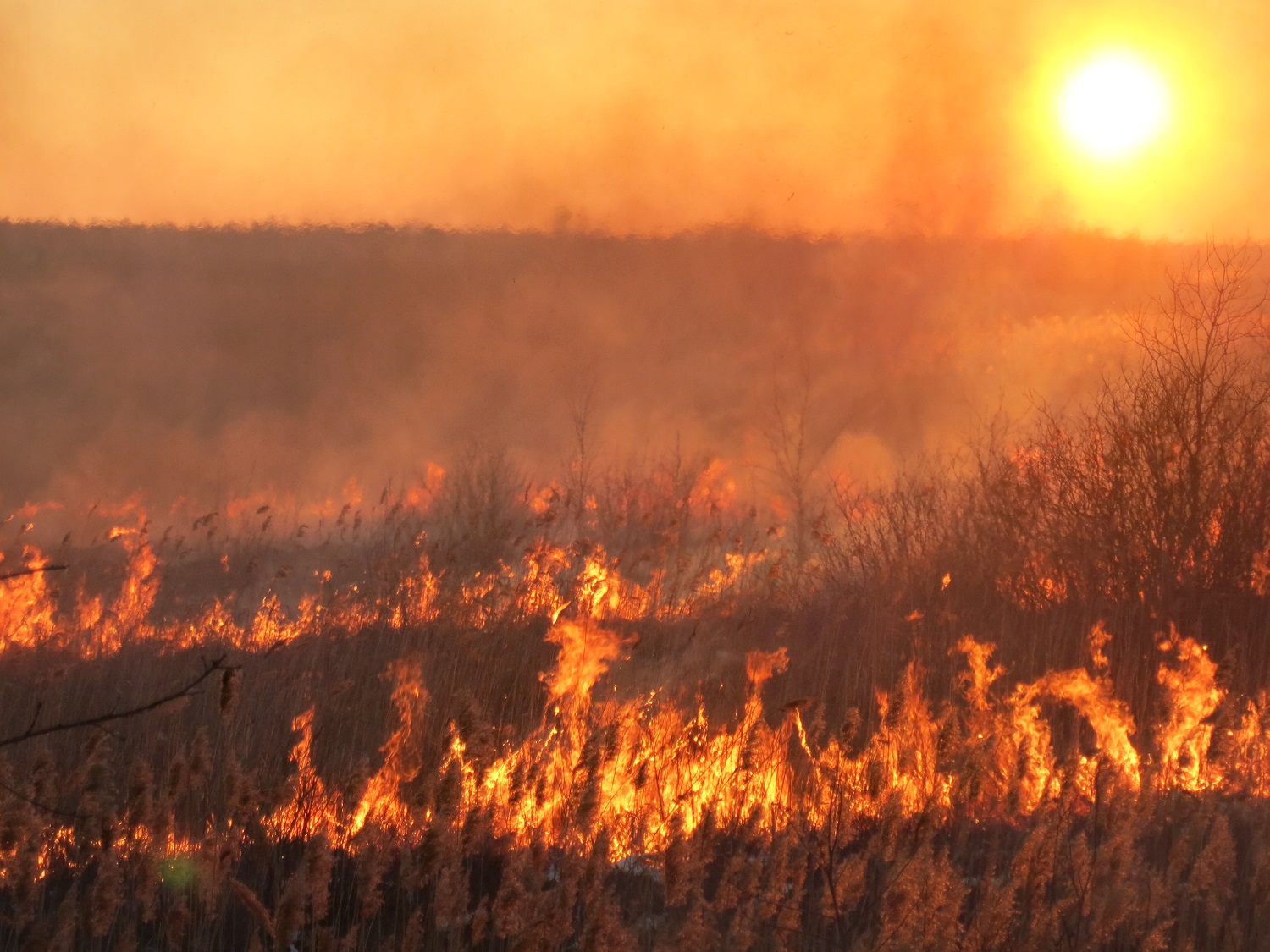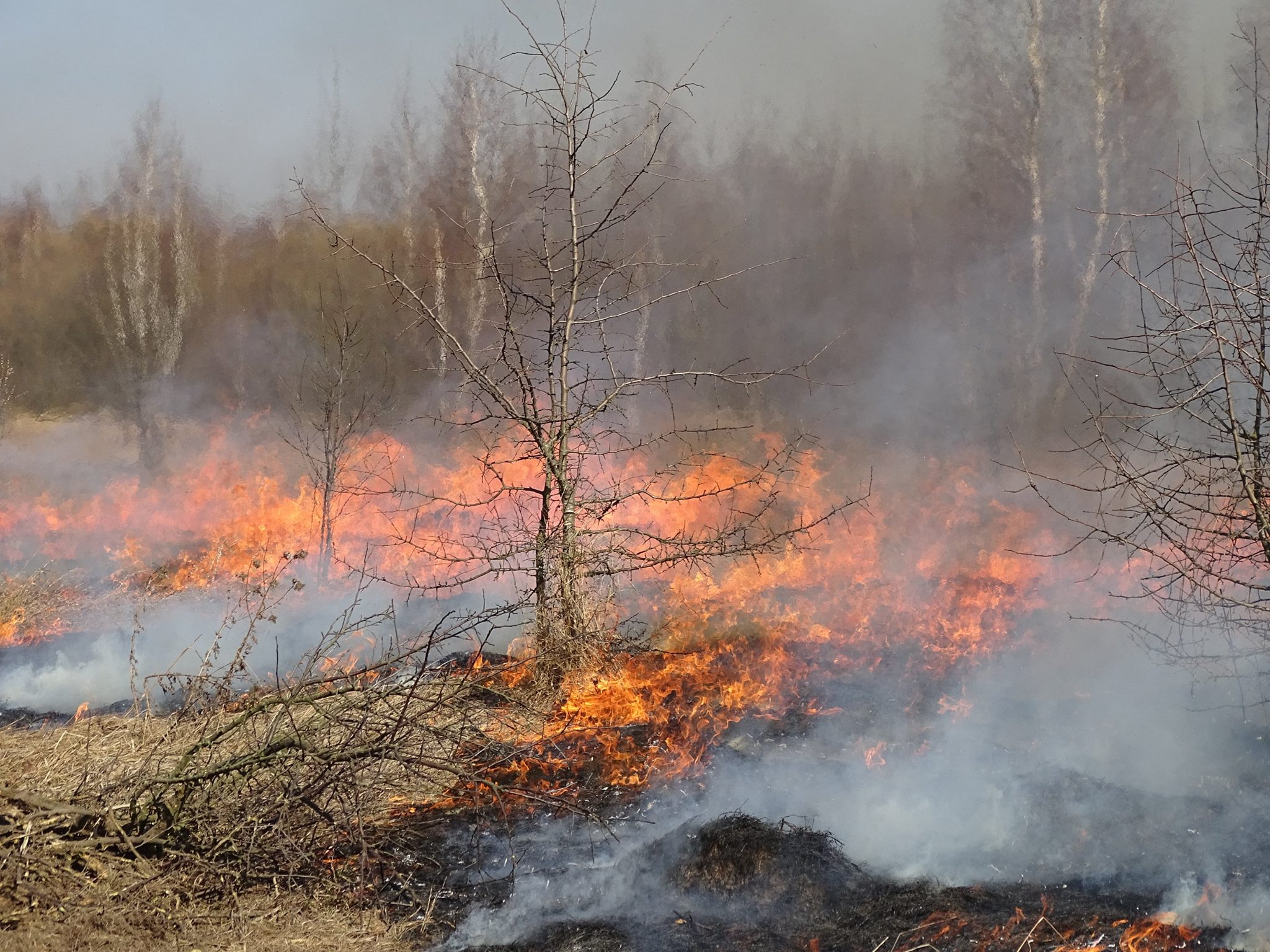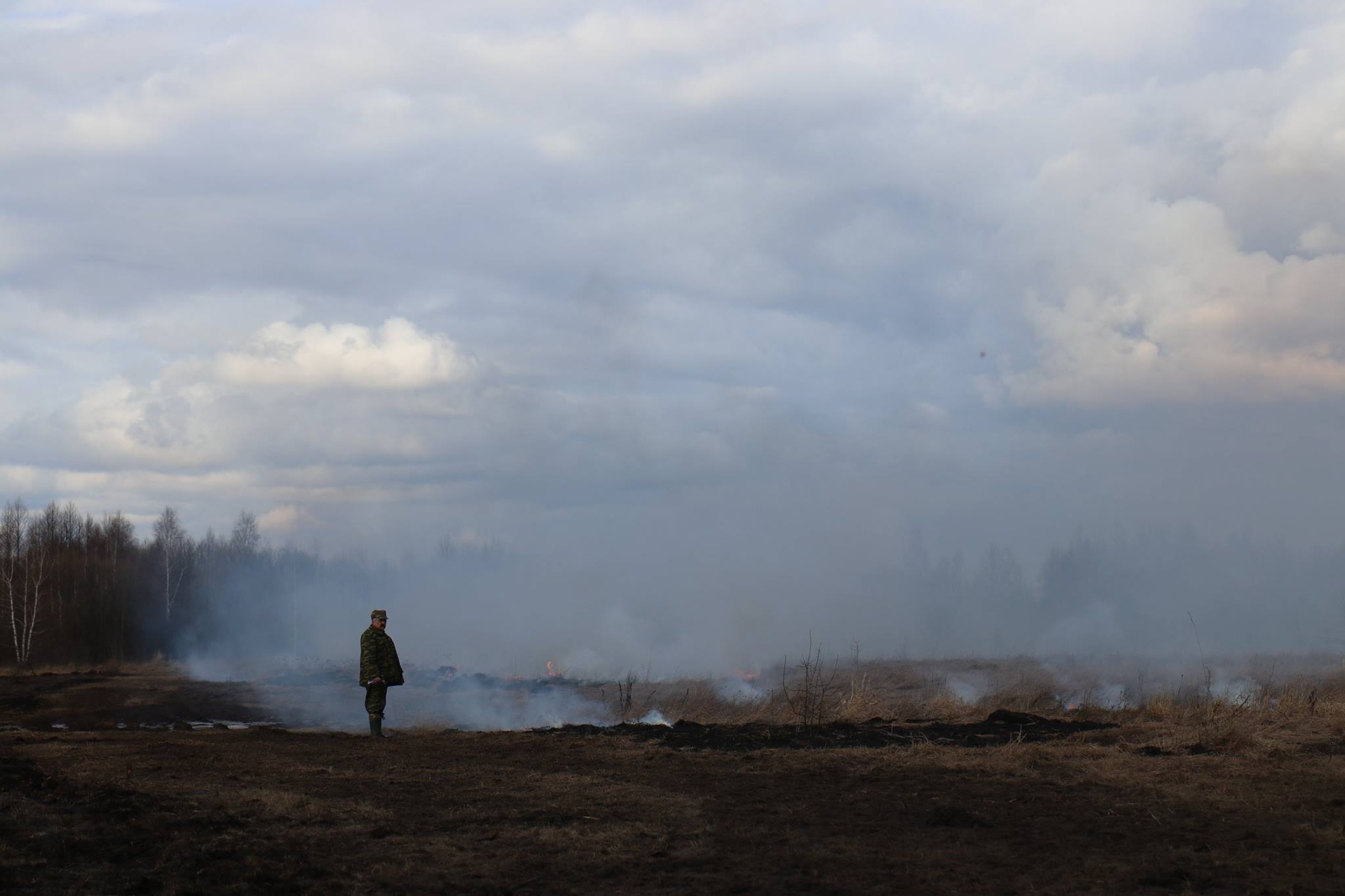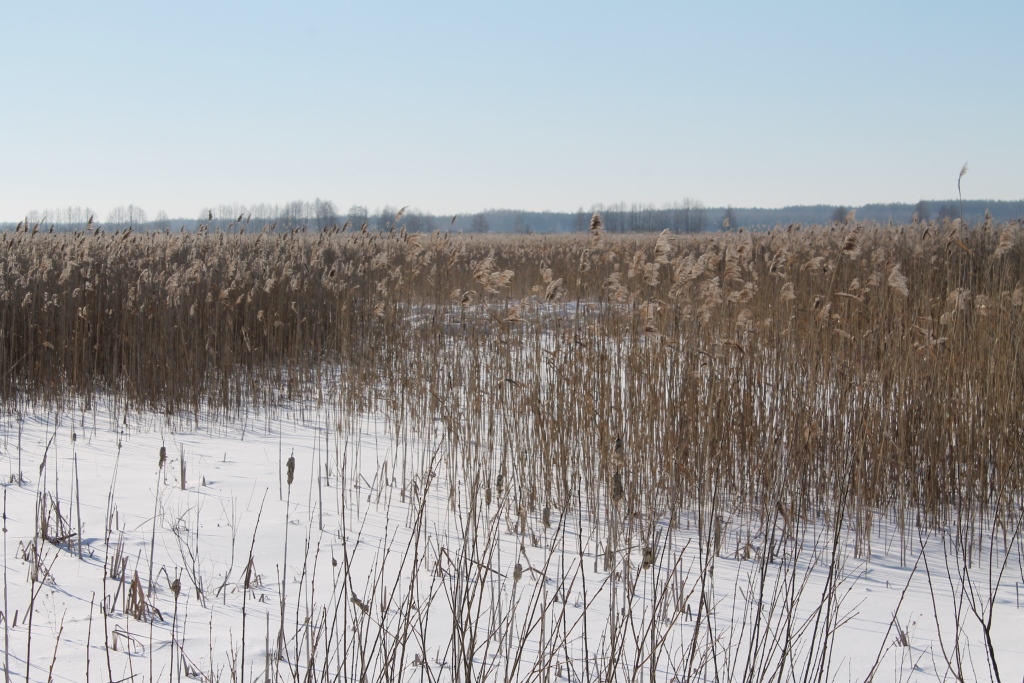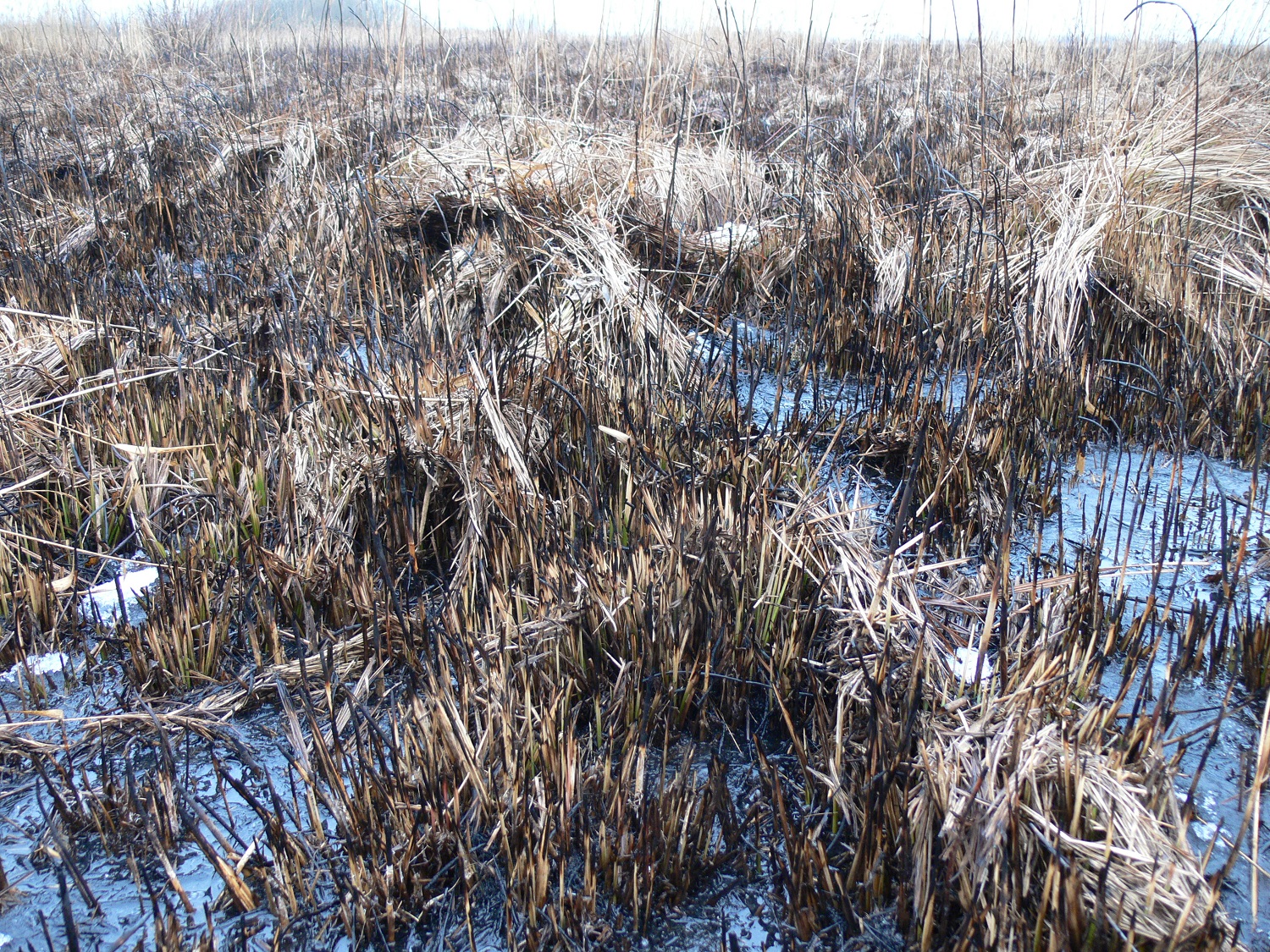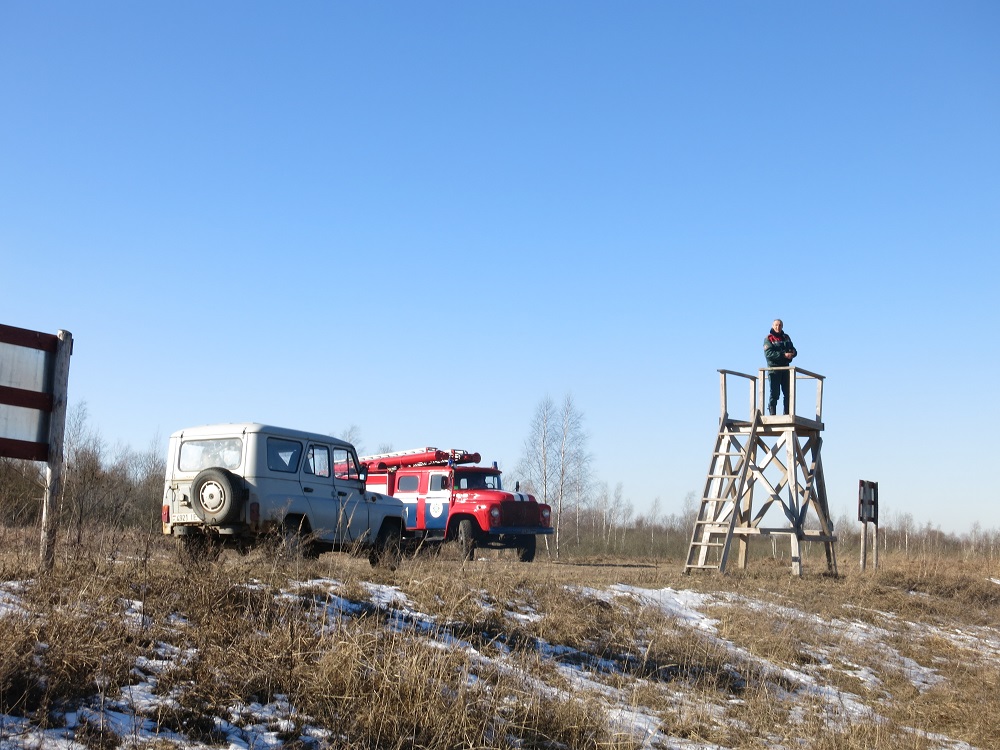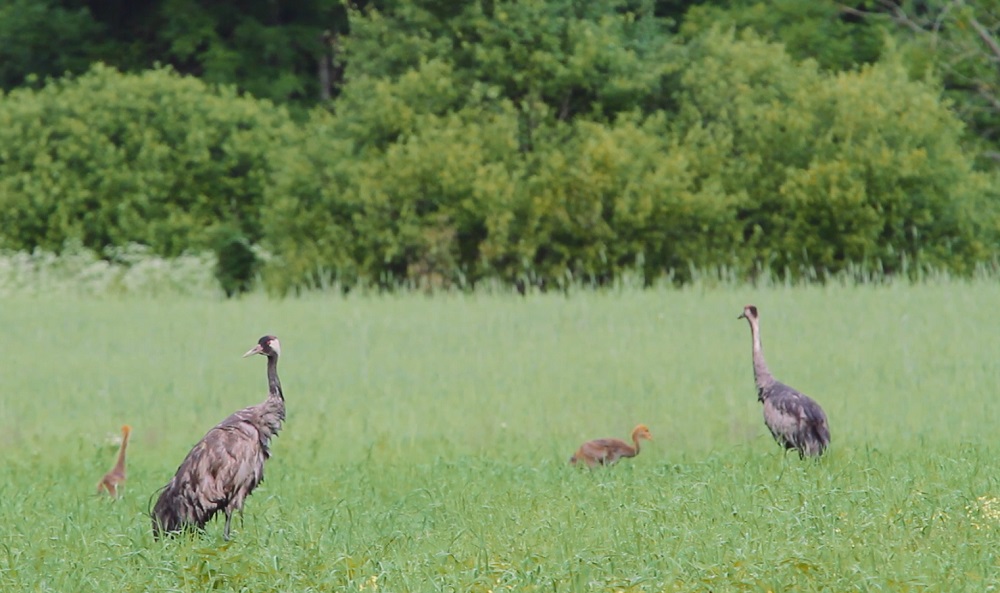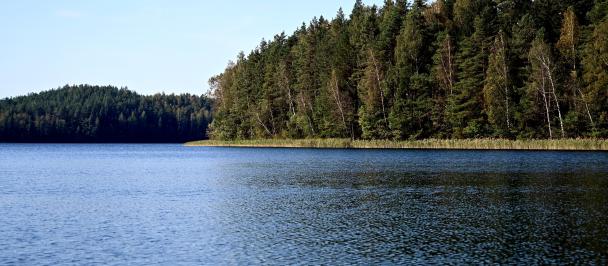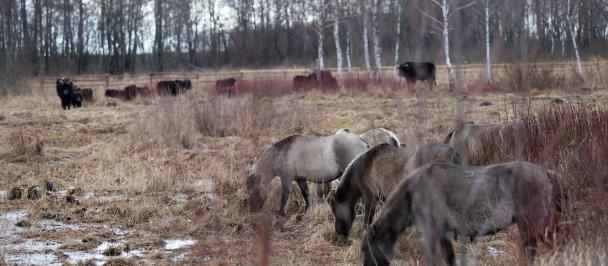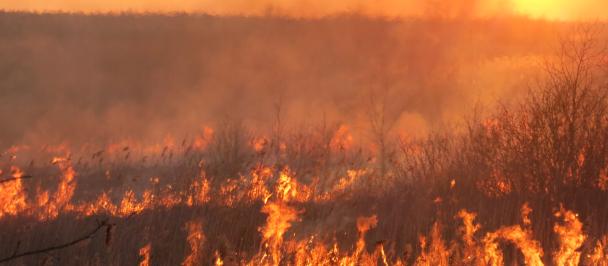Photograph: UNDP in Belarus
Wildfires have become much more common in recent decades. Almost every year we read and watch news reports covering fierce nature fires across America, Australia and Europe. Due to the climate warming, wildfires are becoming more intense, burning through vast nature areas, devastating communities and destroying wildlife populations. In Australia alone in 2019-20, the bushfires killed the unprecedented number of three billion animals, including invertebrates.
However, everything is interconnected in nature and along with dramatic outcomes for the environment, consequences of fires can benefit some ecosystems ensuring their stability and succession.
Overgrowth is a threat to the biodiversity of floodplain meadows and fen mires.
Despite a large-scale campaign on draining and agricultural development of Belarus’ peatlands in the 20th century, the country preserved its key fen mire complexes and floodplain meadows and gave them the status of specially protected nature areas (Zvanets, Sporovskoye, Dikoye fen mires, Middle Pripyat floodplain, etc.).
Nevertheless, today the unique richness of flora and fauna of these ecosystems face another environmental challenge – the overgrowth with trees, bushes and reeds.
Why is this happening? In the past, almost all fen mires and floodplain meadows were used by people for hay making and cattle grazing. People regularly cut down shrubs and young trees for their households.
Every year the Sporava Hay Making Fest gathers thousands of people who are passionate to preserve an ancient and eco-friendly craft of manual hay mowing. Photo: Sergei Gapon for UNDP in Belarus.
Since 70-80s of the last century, the traditional use of fen mires and meadows has mostly stopped. Large drainage systems were built to drain mires and to convert them to crop fields. Local cattle population drastically decreased as people saw no economic reason to keep large herds of livestock. All these resulted in rapid overgrowth fen mires and meadows with trees, bushes and reeds.
Overgrowth of open fen mires and meadows severely impacted local biodiversity. The long-term accumulation of dry biomass increased the risk of catastrophic fires during dry periods of the year. In addition, populations of rare animal and plant species that live only in open spaces of fen mires and meadows have declined. Globally endangered bird species, such as the spotted warbler, woodpecker, corncrake, were particularly affected.
Sporauskaye fen mire is threatened by overgrowth. Photo: UNDP in Belarus
In Belarus overgrowth remains a serious challenge for the well-being of more than 500 thousand ha of fen mires and grassland ecosystems and threatens 90% of their wildlife inhabitants.
During the last three years UNDP-Ministry of Environment project "Sustainable management of forest and wetland ecosystems for achieving multiple benefits (Wetlands)", funded by Global Environment Facility (GEF), in partnership with the Scientific and Practical Centre for Bioresources of the National Academy of Sciences of Belarus (SPCB) and the administrations of nature reserves designed and piloted new solutions to address the issue of overgrowth.
- Use of special machinery for mowing of grassy vegetation and reeds to produce biomass, which is used as fodder and bedding material in agriculture and for production of construction materials.
- Cutting of trees and shrubs to produce local biofuel in the form of fuel chips.
- Implementation of regulated livestock grazing in river floodplain areas important for wetland bird species.
However, there are some situations where these solutions cannot be applied. For example, the use of mowing machinery is not cheap and requires considerable financial resources. Apart from this, some territories can be inaccessible to cutting or heavy machinery due to peculiarities of landscape (high mounds, swampy places). In such cases, controlled or managed burning of dry vegetation may be the most feasible solution to keep overgrowth under control and help maintain high levels of biodiversity.
Controlled burning - balancing between benefits and risks.
A burning fen mire. Photo: the Scientific and Practical Centre for Bioresources of the National Academy of Sciences of Belarus.
Wildfires are natural phenomena. Therefore, some ecosystems, including grasslands and fen mires, have evolved and can benefit from natural fires. However, given the risks that fire poses to nature and humans, there are some debates among environmentalists on the widespread use of controlled burning for nature conservation.
Controlled burning mocks natural fires. Since the 1920s, the managed burning of dry vegetation has been widely used across the United States and Canada. Today, these countries have accumulated solid experience in the area and developed models and programmes for planning and managing prescribed fires. Controlled burning is wildly used there to prevent spontaneous fires that can cover large areas, resulting in loss of life and significant economic damage. Burning is also used to control forest diseases, improve pastures and wildlife habitats, control dry and unwanted vegetation, prepare areas for planting seedlings, and sowing seeds.
In Belarus’ Polesie region, dry grass was burnt to create room for fresh plant growth that will be used as a forage for domestic livestock. Today the use of controlled burning for the conservation of fen mires and floodplain meadows is at the research and testing stage.
Experimental managed burning at Sporava fen mire. Photo: the Scientific and Practical Centre for Bioresources of the National Academy of Sciences of Belarus.
UNDP- Environment Ministry “Wetlands” project in collaboration with the SPCB developed a methodology, designed to use prescribed fire for keeping wetlands and grasslands in a healthy state and to reduce the risk, intensity and severity of wildfires. In practice, this tool is being experimented with in “Zvanets” and “Sporauski” Nature Reserves with the participation of representatives of the Ministry of Forestry, Ministry of Emergency Situations, territorial bodies of the Ministry of Environment, as well as local land users.
Controlled burning helps to preserve the biodiversity loss of open fen mire and floodplain meadows, prevent uncontrolled and devastating wildfires.
With properly designed control and burn treatments, the managed burning can be an effective nature-based solution to control overgrowth of fen mires and grassland ecosystems, if other solutions like haying and grazing are inaccessible.
Local forestry officer monitors the spread of fire during controlled burning at Sporauskaye fen mire. Photo: the Scientific and Practical Centre for Bioresources of the National Academy of Sciences of Belarus.
Managed burning requires some preparatory work. It is necessary to coordinate the control plan with the Ministry of Emergency Situations, territorial bodies of the Ministry of Environment, local land users. Ensuring the safety of local communities, residential and industrial buildings is at the core of the control plan.
An ideal condition for conducting controlled burning. Photo: the Scientific and Practical Centre for Bioresources of the National Academy of Sciences of Belarus.
The effectiveness and safety of prescribed fires largely depend on natural factors. The safest time for burning is the end of the winter or early spring, when relatively cool, damp conditions allow a rapid fire to be managed through the canopy vegetation.
Flames only pass over the top of the dry plants and don’t burn the soil, leaving overwintering plant shoots and insects intact and safe. Photo: the Scientific and Practical Centre for Bioresources of the National Academy of Sciences of Belarus.
Today Belarus has no approved algorithm for conducting controlled burning in natural ecosystems. The Law of the Republic of Belarus "On Wildlife" recognizes burning as a tool for managing habitats of rare wildlife species, which are included in the Red Book and have the globally endangered species status. There also one capital condition for this - the managed burning has to be stipulated in the Management Plans of the protected nature areas.
A fire brigade is ready to respond if the burning gets out of hand. Photo: the Scientific and Practical Centre for Bioresources of the National Academy of Sciences of Belarus.
Regular burning experiments, conducted with the support of the UNDP-Environmental Ministry “Wetlands” project in the nature reserves "Sporauski" and "Zvanets", helped accumulate valuable information, which became the basis for the development of proposals on scaling up this management tool for conservation of valuable wetland ecosystems.
Monitoring of the biodiversity at these territories showed that the methodology works. After the burning, the numbers of wetland birds that avoid overgrown areas, such as the swift warbler, great spindle, great crested greenshank, woodpecker and others, increase their populations.
The risk of spontaneous spring fires is significantly lower. No fires occurred on the pilot territories in 2020, which was a very dry year.
It can be argued that controlled burning is rather effective nature-based solution for keeping valuable wetland ecosystems in health and safe from spontaneous fires. However, it should be kept in mind that controlled burning needs thorough planning and requires coordination of all those involved. The slightest shortfall can turn an ecosystem-saving mission into ecosystem-destroying with enormous risks for the lives and health of people in local communities.

 Locations
Locations